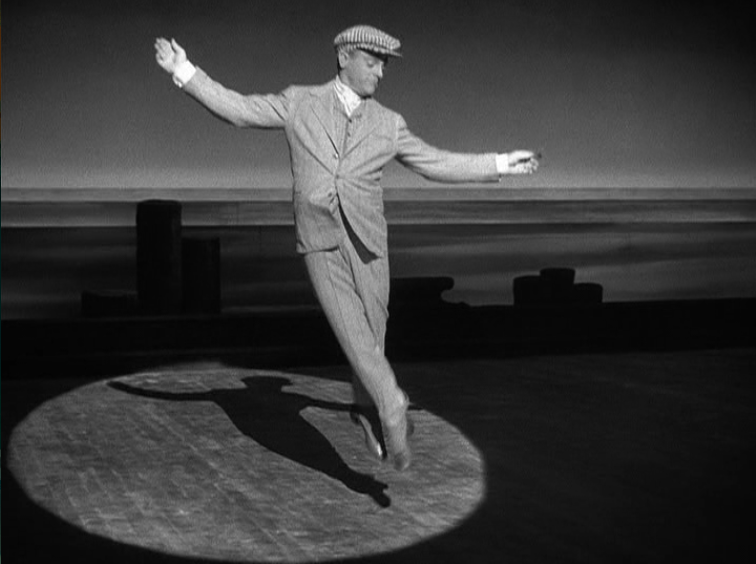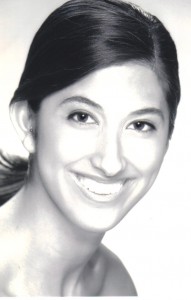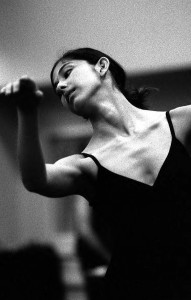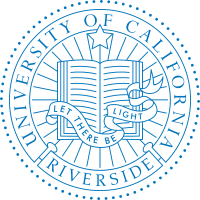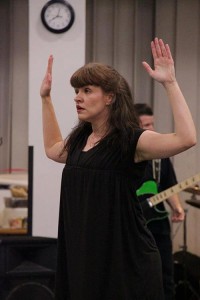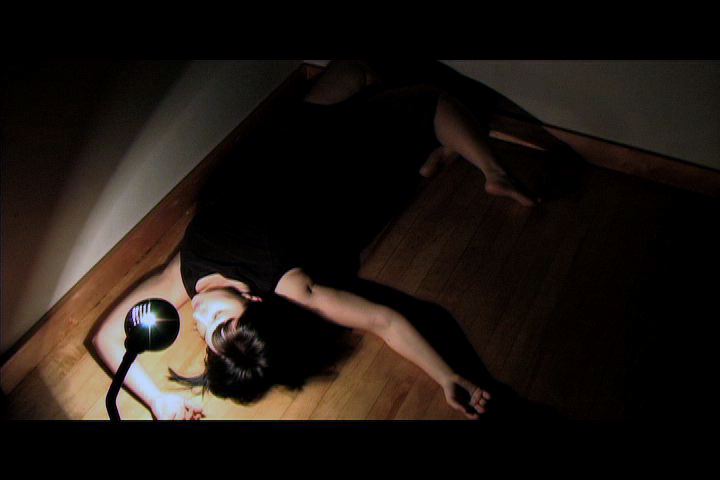Cyd Charisse
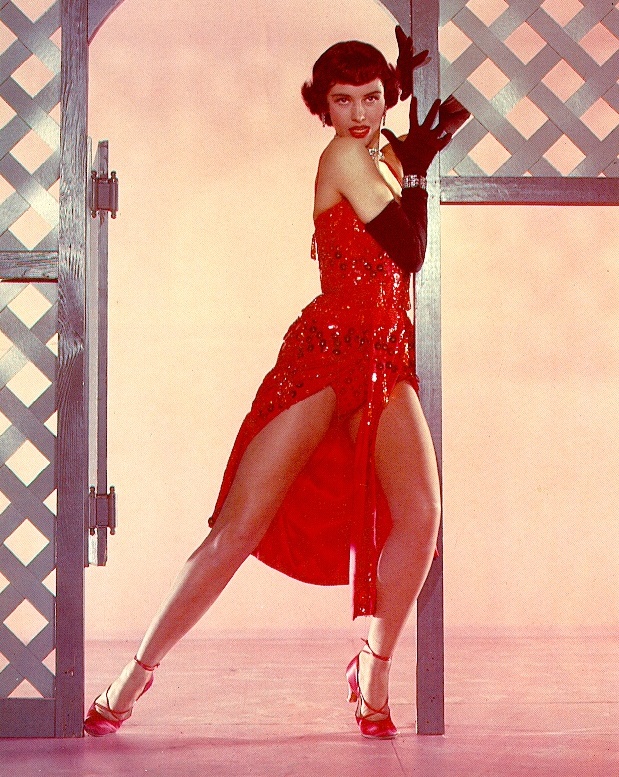
If I had to give up either acting or dancing, I’d choose to keep dancing.
Charisse was born as Tula Ellice Finklea in Amarillo, Texas, the daughter of Lela (née Norwood) and Ernest Enos Finklea, Sr., who was a jeweler. Her nickname “Sid” was taken from a sibling trying to say “Sis”. (It was later spelled “Cyd” at MGM to give her an air of mystery.) She was a sickly girl who started dancing lessons at six to build up her strength after a bout with polio. At 12, she studied ballet in Los Angeles with Adolph Bolm and Bronislava Nijinska, and at 14, she auditioned for and subsequently danced in the Ballet Russe de Monte Carlo as “Felia Siderova”[5][6] and, later, “Maria Istomina”.
The outbreak of World War II led to the breakup of the company, and when Charisse returned to Los Angeles, David Lichine offered her a dancing role in Gregory Ratoff’s Something to Shout About. This brought her to the attention of choreographer Robert Alton – who had also discovered Gene Kelly – and soon she joined the Freed Unit at Metro-Goldwyn-Mayer, where she became the resident MGM ballet dancer. In an early role, she had her first speaking part supporting Judy Garland in the 1946 film The Harvey Girls. Charisse was principally celebrated for her onscreen pairings with Fred Astaire and Gene Kelly. She first appeared with Astaire in a brief routine in Ziegfeld Follies (produced in 1944 and released in 1946). Her next appearance with him was as the lead female role in The Band Wagon (1953), where she danced with Astaire in the acclaimed “Dancing in the Dark” and “Girl Hunt Ballet” routines.
As Debbie Reynolds was not a trained dancer, Gene Kelly chose Charisse to partner with him in the celebrated “Broadway Melody” ballet finale from Singin’ in the Rain (1952), and she co-starred with Kelly in 1954’s Scottish-themed musical film Brigadoon. She again took the lead female role alongside Kelly in his penultimate MGM musical It’s Always Fair Weather (1956).
In 1957, she rejoined Astaire in the film version of Silk Stockings, a musical remake of 1939’s Ninotchka, with Charisse taking over Greta Garbo’s role. In his autobiography, Astaire paid tribute to Charisse, calling her “beautiful dynamite” and writing: “That Cyd! When you’ve danced with her you stay danced with.” She had a slightly unusual serious acting role in Party Girl (1958), where she played a showgirl who became involved with gangsters and a crooked lawyer, although it did include two dance routines.
In her autobiography, Charisse reflected on her experience with Astaire and Kelly: “As one of the handful of girls who worked with both of those dance geniuses, I think I can give an honest comparison. In my opinion, Kelly is the more inventive choreographer of the two. Astaire, with Hermes Pan’s help, creates fabulous numbers – for himself and his partner. But Kelly can create an entire number for somebody else … I think, however, that Astaire’s coordination is better than Kelly’s … his sense of rhythm is uncanny. Kelly, on the other hand, is the stronger of the two. When he lifts you, he lifts you! … To sum it up, I’d say they were the two greatest dancing personalities who were ever on-screen. But it’s like comparing apples and oranges. They’re both delicious.”
After the decline of the Hollywood musical in the late 1950s, Charisse retired from dancing but continued to appear in film and TV productions from the 1960s through the 1990s. She had a supporting role in Something’s Got to Give (1962), the last, unfinished film of Marilyn Monroe. She made cameo appearances in Blue Mercedes’s “I Want to Be Your Property” (1987) and Janet Jackson’s “Alright” (1990) music videos. Her last film appearance was in 1994 in That’s Entertainment! III as one of the onscreen narrators of a tribute to the great MGM musical films.
The Band Wagon
Silk Stockings
The Broadway Medley from Singing in the Rain
Facts About Miss Cyd Charisse
Took her name Cyd from a nickname originated from her brother. Initially, he could not say sister and called her Sid. She took the nickname and convinced her agent to keep the name with the present spelling. He feared that Sid was too masculine.
Grew up in the Texas dust-bowl town of Amarillo. Her Baptist jeweler father, a closet balletomane, encouraged her to begin her ballet lessons for health reasons.
She danced with the Ballet Russe using the names Maria Istomina and Felia Sidorova.
Although one of the greatest female dancers in the history of the movie musical, her singing in films was almost always dubbed, most notably by Carol Richards in Brigadoon (1954) and a young Vikki Carr in The Silencers (1966).
In 1952, she had a $5-million insurance policy accepted on her legs.
Lost out on two of MGM’s biggest movie musical roles. She fell and injured her knee during a dance leap on a film which forced her out of the role of Nadina Hale in Easter Parade (1948). Ann Miller replaced her. She also had to relinquish the lead femme role in An American in Paris (1951) due to pregnancy. Leslie Caron took over the part and became a star.
Unlike many top female dancers in the era of movie musicals, she was trained as a ballerina in the Russian tradition.
During a family vacation in Los Angeles when she was 12, her parents enrolled her in ballet classes at a school in Hollywood. One of her teachers was Nico Charisse.
Said her husband could tell who she had been dancing with that day on an MGM set. If she came home covered with bruises on her, it was the very physically demanding Gene Kelly, if not it was the smooth and agile Fred Astaire.
Fred Astaire, in his 1959 memoir “Steps in Time”, referred to Cyd as “beautiful dynamite”.
Got her start in Hollywood when Ballet Russe star David Lichine was hired by Columbia for a ballet sequence in the musical film Something to Shout About (1943). Cyd, who was then billed as Lily Norwood, appeared in the scene and attracted attention. Movie offers, including a dancing role opposite Astaire in Ziegfeld Follies (1945), led to a seven-year contract offer by MGM.
She was inducted into the Texas Film Hall of Fame in March 2002 in Austin, Texas.
One of the few actresses to have danced with both Fred Astaire and Gene Kelly in the movies, other actresses that have also done this includes Judy Garland, Rita Hayworth, Vera-Ellen, Debbie Reynolds and Leslie Caron.
One of the few, if not only, world-renowned prima ballerinas to be featured in a popular hip-hop music video. She had a cameo in “Alright” (1990) by Janet Jackson.
She was an honorary member of the National Federation of Republican Women along with Laraine Day, Rhonda Fleming and Coleen Gray.
Although she is interred in a niche at Hillside Memorial Park, a well-known Jewish cemetery in Los Angeles, Charrise was in fact a practicing Methodist. Her funeral was even presided by Dr. Gary Allen Dicky, pastor of the United Methodist Church of Westlake Village.


